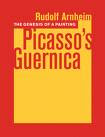I have been wrestling with the idea that God's Kenosis is essential to his relationship with creation. Indeed, the idea for my phd dissertation is predicated upon the assumption that the analogous relationships Creator-creation and artist-artwork are characterized by kenosis: a "self-emptying" or "self-giving" on the part of the Creator/artist that ensures the "otherness" of creation/artwork. The Work of Love is a collection of essays that explores the theme of "Creation as Kenosis" as a response to classical doctrines of creation that emphasis omnipotence, omniscience, and immutability. Thus, "Creation as Kenosis" implies an amount of "vulnerability," "risk," and "sacrifice" on the part of the Creator.
Coakley points out what I had suspected, but not yet articulated. She writes, "the striking commitment in this book to a libertarian view of freedom may be the linchpin holding several other systematic choices together." (204) Libertarian freedom is the kind that considers a human being to be "free from conditioning control by another." (205) The visual picture of Kenosis, with its connotations of "limitation" and "otherness," provided in The Work of Love is one of God stepping aside so that His creatures won't be dominated. Coakley describes the picture as "a (very big) divine figure backing out of the scene, or restraining his influence, in order that other (little) figures may exercise completely independent thinking and acting." (205)
This picture, she argues, is a male-gendered picture of freedom. She connects this kind of freedom to "the male child's repudiation of the power of the mother." (205) There is a sense in which this freedom by distancing is a peculiarly male fantasy. "The underlying symbolish -- this argument goes on -- is of a normative 'masculine' self who gains independence by setting himself apart from that which gave him life and indeed continues to sustain him." (205) This type of freedom ensures "otherness," which is arguably essential for the existence of a loving relationship, by creating distance between God and his creation.
Does Kenosis present us with an alternative to libertarian freedom, or do the two go hand in hand? The alternative, Coakley argues, is compatibilist, but at the same time free from the determinism that the contributors of The Work of Love believe to characterize classical approaches to divine interaction with the world. She observes, in fact that such an alternative is ironically present within The Work of Love.
The alternative picture of Creator-creature interaction "undoes this assumption about the supposedly strangling effect of a continuous dependence on the divine." (206) What is suggested by Coakley, and Ian Barbour in his essay "God's Power: A Process View," is an understanding of God's power "not as overpowering but as empowering." (15) Barbour draws on the work of Anna Case-Winter (God's Power: Traditional Understanding and Contemporary Challenges, 1990) who suggests that God's power may be better understood in terms of mothering. The child's response to the mother is not in competition with the desires of the mother that the child become a full person in his/her own right. In fact, the child's response completes the activities of the mother. This type of freedom ensures the "otherness" of creation through the continual and intimate sustaining of the creature by the Creator.
Coakley concludes her thoughts on Kenosis and freedom by writing: "If we think of divine kenosis as required for a God who must get out of the way in order that 'freedom' be enacted, then one sort of gendered picture is probably in play; whereas if we think of God as nurturing and sustaining us into freedom (of a different, compatibilist, sort), then it may be that another set of gender associations are present in the background. For the latter view, it is not God who is in need of restriction or 'emptying', but rather a false form of hubristic human power." (206)
It is interesting that Kenosis should generate two different accounts of freedom, one based upon distance, the other on intimacy. Similarly, theologians writing about kenosis will use the terms "self-giving" and "self-emptying," as I did at the beginning of this post, despite their different connotations of fullness and absence. That the kenosis of God, primarily a theological concept about the relationship between Creator and creature, should be articulated in such disparate terms seems, to me at least, to be a good thing because it suggests the struggle within a relationship of persons to define one's self while leaving room for the 'other.'
I am also happily surprised to see that "Kenotic Theology" (if I can use the term) does not require one to accept libertarian freedom, but that compatibilism is an option as well. How libertarian freedom is articulated within a kenotic understanding of the relationship between Creator and creature appears to be fairly straightforward. How compatibilism is articulated, however, within the same understanding will require more thinking and reading on my part, as well as more conversations with Shawn Bawulski.




1 comment:
Sadly, it has taken me well over a month to discover this blog post. Happily, I find what you say here insightful and very intriguing. We will have to think it over, but I suspect a satisfying account of divine and human creativity-- one that incorporates compatibilistic free will-- is available to us. Looking forward to continuing this conversation. Shawn
Post a Comment